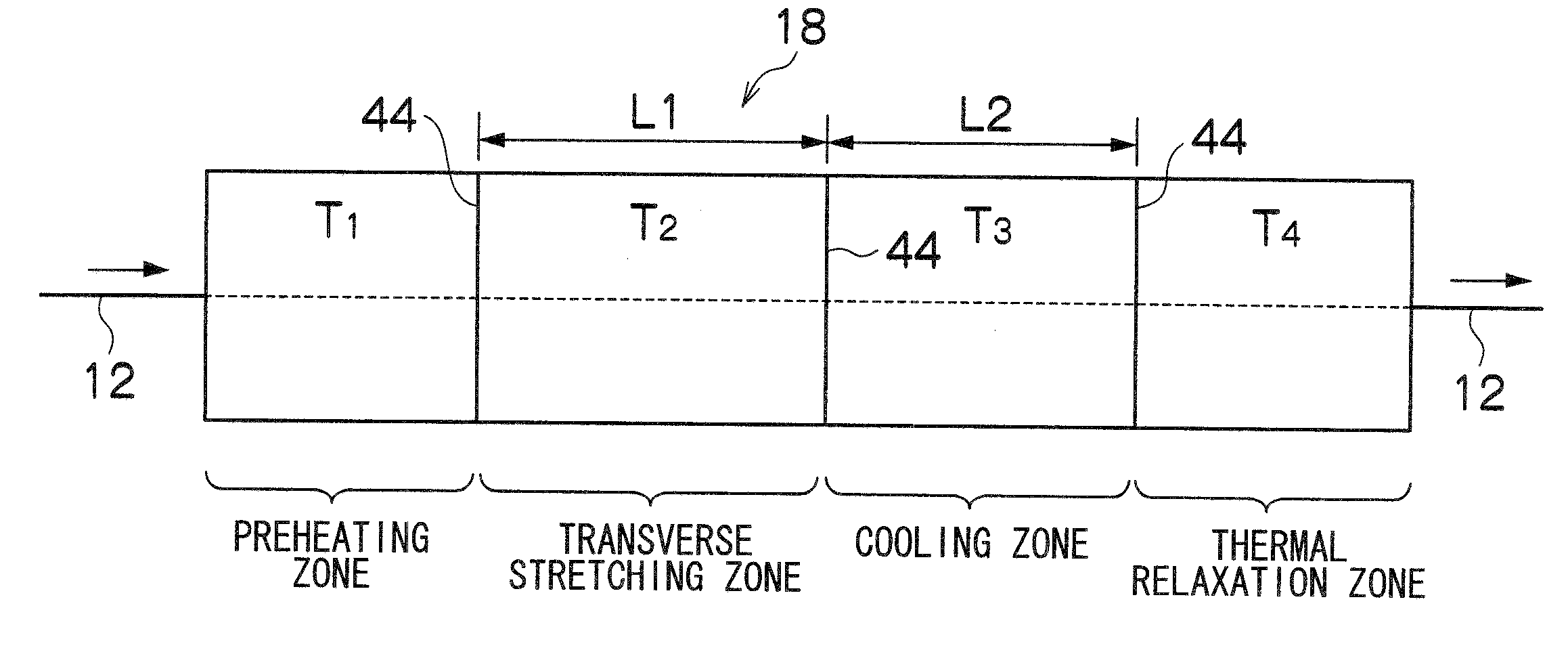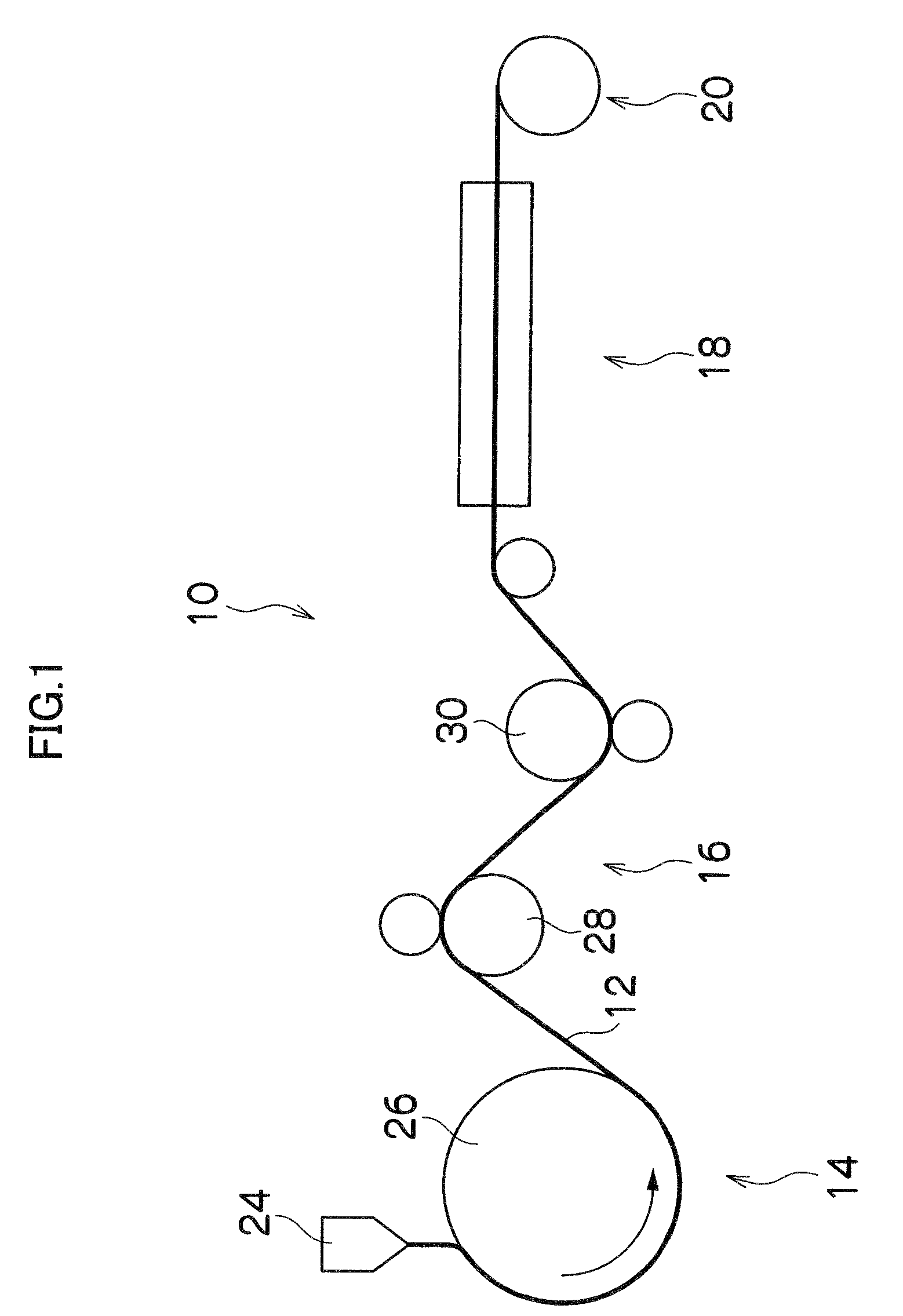Method for producing thermoplastic film
- Summary
- Abstract
- Description
- Claims
- Application Information
AI Technical Summary
Benefits of technology
Problems solved by technology
Method used
Image
Examples
example
Cellulose Acylate Resin
[0215]In the preparation of cellulose acylate, sulfuric acid (7.8 parts by weight per 100 parts by weight of cellulose) was added as a catalyst, and a carboxylic acid, as a raw material of acyl substituent, was added to perform acyllation at 40° C. The kind and substitution degree of acyl group were adjusted by adjusting the kind and amount of the carboxylic acid added. After acyllation, aging was performed at 40° C.
[Melt Film Formation]
[0216]The cellulose acylate resin was formed into cylindrical pellets 3 mm in diameter and 5 mm in length. In this operation, a plasticizer was selected from among those described below and kneaded into the pellets. The pellets were dried in vacuum drier at 110° C. so that their moisture content was 0.1% or less, and after adjusting their temperature to Tg−10° C., they were fed to a hopper. The plasticizer was selected from among TPP: triphenylphosphate, BDP: biphenyldiphenyl phosphate, DOA: bis(2-ethylhexyl) adipate, and PTP: ...
PUM
| Property | Measurement | Unit |
|---|---|---|
| Temperature | aaaaa | aaaaa |
| Fraction | aaaaa | aaaaa |
| Fraction | aaaaa | aaaaa |
Abstract
Description
Claims
Application Information
 Login to View More
Login to View More - R&D
- Intellectual Property
- Life Sciences
- Materials
- Tech Scout
- Unparalleled Data Quality
- Higher Quality Content
- 60% Fewer Hallucinations
Browse by: Latest US Patents, China's latest patents, Technical Efficacy Thesaurus, Application Domain, Technology Topic, Popular Technical Reports.
© 2025 PatSnap. All rights reserved.Legal|Privacy policy|Modern Slavery Act Transparency Statement|Sitemap|About US| Contact US: help@patsnap.com



